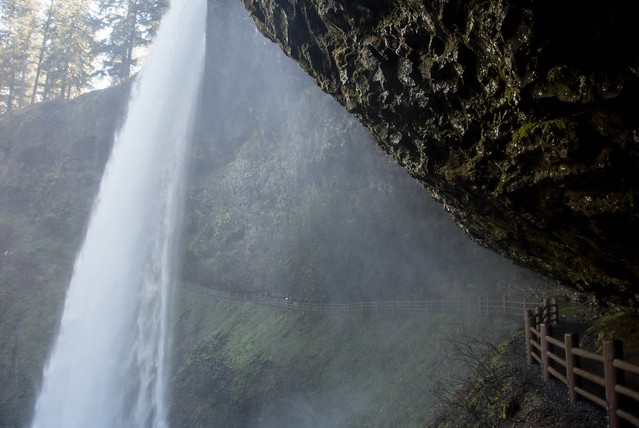This is amazing – take a look! An Old Trick to Make 3D Pics in 2D.
Monthly Archives: February 2014
Nikon 1 J1 J2 compact mirrorless cameras
I recently sold off some older gear that I no longer use. At the same time I went looking for a smaller camera form factor for my 3D work. I already shoot smaller Lumix GH-2 pairs but sometimes I want smaller than that, and especially to place the lens centers closer together for a narrow interaxial.
I explored a lot of options, starting from thinking I wanted something like the Canon s110 or s120. But after building up a spreadsheet of cameras, camera features, and the features I needed, I ended up picking up some “used” Nikon 1 cameras. (“used” because the J2 was in a factory sealed box, so go figure.) The J1 and the J2 are the same camera, for the most part, except that the J2 has twice the resolution on the LCD back panel. Neither camera has an eye viewfinder (need the V1 or V2 for that). But when I am shooting 3D, I use the back panels almost exclusively so I can look at both cameras at the same time.
I will eventually write up more about the decision process that led to the Nikon 1 system cameras (small size, interchange-able lenses, decent low light performance) versus alternatives. And I will eventually do a write up about their use in 3D. This may be a while so do be patient! I am a huge fan of mirrorless – small, light weight means everything to me. At this point, I would not consider a mirror-based “DSLR” (keep in mind I am primarily a video shooter).
The two still photos, below, were taken with the J2 yesterday. Both were shot in RAW mode and processed in Lightroom. Both photos really used the RAW mode to advantage due to the wide dynamic range of these scenes.
On this hike I shot 3D video using paired Lumix GH-2s, and carried the J2 around my neck for “snap shots”. I am very pleased with the results. Very pleased.
The video tests I have shot with the Nikon 1 more than meet my expectations. Because I am primarily a 3D video shooter, video quality is important to me. When I looked online at Nikon 1 samples, most of what was posted was junk. Junk as in very poorly shot, shaky handheld, whip pans type of video, wrong shutter speeds, etc. I found only one video (hosted on a personal web site, not Youtube or Vimeo or DailyMotion) that was shot properly to show off the camera’s capability.
The main limitation is the stock kit lens – 10-30mm, starting at f/3.5. It’s a slow lens. And the slowest video shutter speed is 1/60th of a second, not 1/30th of a second. That means video night scenes are pushed to ISO 3200. Ick. The solution is to get a fast lens. Nikon sells one, reasonably priced, at f/1.8. It’s also possible to use various fast Super 16mm film camera lenses as the Nikon 1 sensor size is about the same size as the 16mm frame size. There are lots of f/1.2, f/1.3 c-mount lenses that work well. More on that topic another day too!
Related articles
US Release of Disney’s Frozen 3D Blu-ray “delayed”
You can already pre-order the 3D version in the Amazon UK store but Disney seems to have put a US 3D release on ice: Official: ‘Frozen’ 3D Blu-ray Domestic Release Delayed Indefinitely – Disney News by Stitch Kingdom.
There is a report that the UK release is a “region free” version (it is labeled that way at the Amazon UK site). Otherwise, as you may know, DVDs and Blu-rays are coded by region so you cannot normally purchase a disc overseas to play in U.S. players.
Why is Disney not releasing a 3D version in the U.S.? We can only guess. Sales of 3D Blu-rays skyrocketed in the past year so there seems to be consumer interest. Perhaps they plan to release the 3D version later, bundled with a “behind the scenes” video. Or something. My guess is that they will eventually release a 3D version – and maybe their marketing figured out that many will buy the 2D version now, and they can then sell the 3D version to those customers later! And make more money that way! Argghhh!
Device adds 3D overlay to your TV viewing
Claims to analyze what your are watching and then adds Internet supplementary content in planes in front of the screen: Finally, A Way To Put 3D TV To Good Use.
There’s a Youtube video at the link that illustrates the idea.
Interesting.
Comparing camera image sensor size
Image sensor format – Wikipedia, the free encyclopedia.
Not exactly to scale but close I suppose:
Of interest, the popular 1/2.3″ sensor size used in most point and shoot compacts, is slightly larger than the original Super 8mm film frame.
The Nikon CX 1″ format is slightly larger than standard 16mm film frame size.
There are 4 mid-range formats (4/3ds, and flavors of APS-C), and then full frame. Where did the abbreviation APS come from? It’s based on the Advanced Photo System film negative used for film cameras in the 1990s. Today’s APS sensor digital cameras are roughly the same size as the APS frames.
The Nokia 808 PureView (the 41 megapixel smart phone) camera sensor is almost the same size as the Blackmagic pocket cinema camera.
My Nexus 4 smart phone camera takes pretty awful photos – and the video is downright sucky – certainly compared to Nokia and Apple iPhones. Not surprisingly, its got a smaller sensor – and the iPhones use back side illuminated CMOS sensors, making them more sensitive to light.














